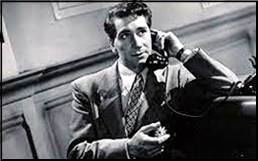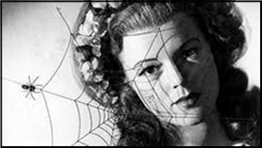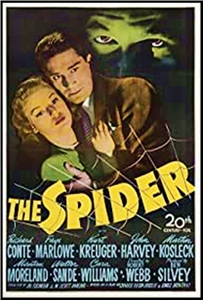Fri 19 Jun 2015
A TV Western Series Review by Mike Tooney: LARAMIE (1959-63).
Posted by Steve under Reviews , TV Westerns[41] Comments
LARAMIE. NBC-TV, 4 seasons (1959-63), 124 episodes. Regular cast: Seasons 1 through 4: John Smith (Slim Sherman) and Robert Fuller (Jess Harper); Seasons 1 and 2 only: Hoagy Carmichael (Jonesy) and Robert Crawford, Jr. (Andy Sherman); Seasons 3 and 4 only: Spring Byington (Daisy Cooper) and Dennis Holmes (Mike Williams).
Laramie is a relatively undistinguished but nevertheless very enjoyable series. Most of the plots are predictable, nothing any regular Western movie and TV fan hasn’t already seen a hundred times before.
Despite that, one of the things that makes Laramie so watchable is the characterizations supplied by the two leads, straight arrow Slim (Smith) and edgy Jess (Fuller, a man with a checkered past) as they improbably try to run a ranch and a stagecoach station while gallivanting all over the West tracking down bad guys and gals (which could well explain why they’re always strapped for cash to keep the ranch going).
As for the stories, most of them are standard fare (somebody killed somebody’s brother, etc.), with only a few really pushing the envelope of credibility. It must have been in the leads’ contracts that they would either get badly beaten or shot at least once every episode. Jess in particular usually takes a bullet through the left shoulder but hardly slows down — a real wildcat, that Harper, even with a hole the size of the Channel Tunnel in his torso. And on top of that, no one suffers any infections from their wounds — these guys are TOUGH.
Best of all, Laramie features some of the all-time great Western villain actors: Lyle Bettger, Rod Cameron, Jan Merlin, Gregory Walcott, James Anderson, Harry Lauter, Roy Barcroft, Dennis Patrick, L. Q. Jones, and Robert J. Wilke being just a few. Even the future Mr. Spock (Leonard Nimoy) and “Bones” McCoy (DeForest Kelley) each takes a turn as a bad guy.
And then there’s Charles Drake, not your usual idea of a villain. In a Laramie episode titled “The Accusers” (episode 72) he plays a smooth murderer who, like Uncle Charlie in Shadow of a Doubt, almost gets away with it; if only the finale hadn’t been so badly done.
It must be an axiom in Hollywood: If you can’t come up with something original, steal. Two outright “lifts” from classic non-Western sources for Laramie plots would have to be:
~ “Strange Company” (episode 63) — While some of the locals are desperately trying to rebuild a stage line road, somebody in the crew is systematically killing the workers and Slim doesn’t have a clue as to who or why. If Agatha Christie’s And Then There Were None (or whatever title you might know it by) comes to mind, you’re not alone.
~ “The Lost Dutchman” (episode 49) — Slim gets into a scrape when he’s accused of murder and Jess, turning detective, gets involved in the search for a black bird … no, not really, it’s actually a spur which is believed to have an authentic map (aren’t they all?) to the Lost Dutchman’s mine stuffed in the shank. In this variant of Hammett’s The Maltese Falcon, Robert Emhardt assumes the Kasper Gutman part, Karen Steele takes the Brigid O’Shaughnessy role, and Robert Fuller comes across as a creditable Sam Spade.
So, is Laramie worth your time? It’s a Western, isn’t it? “People love Westerns worldwide. There’s something fantasy-like about an individual fighting the elements. Or even bad guys and the elements. It’s a simpler time.” — Clint Eastwood



